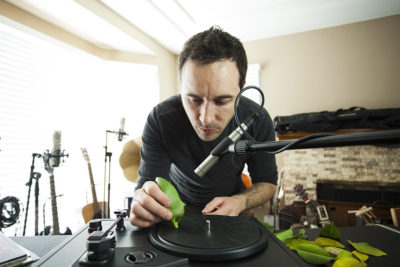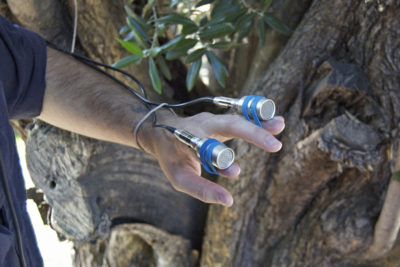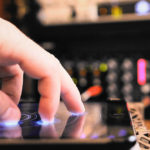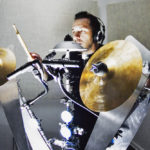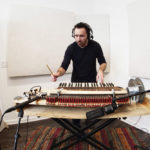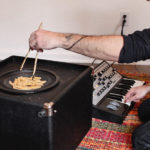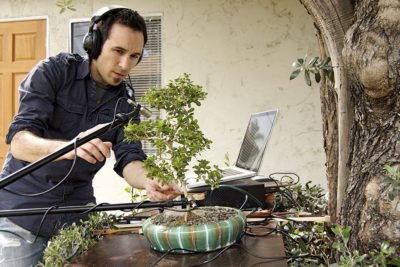Diego Stocco on Experimental Sound Design and Turning Nature into Music
Even if the name Diego Stocco doesn’t ring a bell, chances are that you know his work.
If you have ever used Spectrasonics’ instruments like Omnisphere, Atmosphere, Stylus or RMX, you’ve likely been working with some of his creations, as Stocco serves as one of their principal sound designers and his patches comprise a chief part of their libraries and presets.
You don’t have to be a musician or a producer to have heard his sounds, however. If you’ve seen the 2009 film Sherlock Holmes, then you’ve heard his collaborations with Hans Zimmer. If you’re more of a gamer, and you’ve played Assassin’s Creed Brotherhood or Revelations, you’ve been listening to his collaborations with acclaimed game composer Jesper Kyd.
Chances are if you’re a modern human you’ve even heard his work as part of the sonic branding for companies like like Apple, Kellogs, Korg, General Motors, just to name a few.
Beyond his work in sound design, music for film, television, and games Stocco creates compelling experimental music works using found objects such as “Music from a Tree”, “Music From a Dry Cleaner”, as well as his latest effort Sonic Nature—a full length album of some Diego’s of musical compositions derived from the sounds of nature.
Much of the music that Stocco creates on his stems from some very innovative and unusual techniques, and even from his own unique, hand-built instrument designs.
Stocco has also recently created an Ableton Live template, called ColorBots, which employs a fantastic new technique that he’s developed called “Adaptive Tonal Processing”. This is a custom-built Ableton Live session template that generates new tonal elements by adding sonic coloration to the rhythmic and dynamic qualities of a any loop.
I had the pleasure to ask Stocco some questions about his process and what he’s working on now. Read on below as we talk audio, nature, technology, and innovation with this sonic explorer!
You do so many different things in audio and music, from composition to sound design, to creating new musical instruments and apps. What are you most excited about right now?
There are many things that I still want to try. Building instrument is a good way to keep my mind open, and because of the different approaches I’ve tried over the years, I can now see myself progressing faster with less-cluttered designs.
Color Bots is also something I’m excited about. I wanted to find a way to improve the technique that allowed me to make rhythmic loops tonal and playable—To go from a manual process that would give inconsistent results to an optimized tool that is faster and more inspiring to use.
I picked Ableton Live [as the platform] because it allows me to think about the processing workflow as if I was working with a modular synthesizer, by building specific processing chains and routings.
- Diego Stocco’s “Color Bots” app allows Ableton users to control and maniupulate sounds in new ways.
- Stocco’s sound library includes unique instruments like his hand-built “Stargazer”…
- …”Bassoforte”…
- …and “Pasta Synth”.
Can you tell us more about the Color Bots processing session for Ableton Live? Is this a new type of creation for you?
I had this technique in my pocket for a while. It’s something that I was using to apply a layer of tonality to any rhythmic groove. The [original process] was not in real-time, so it wasn’t really that flexible and fast to make.
Recently, I was trying some stuff in Ableton Live and I realized that there was a way to turn this sound design technique into a playable session, so I did it. Since this Live session does not use any Max 4 Live or any third party plugins, it’s possible for other musicians to purchase my Color Bots set and experiment with their own loops.
It’s easy to tell that a lot of craftsmanship goes into the custom physical instruments you make as well. Instruments like the Experibass and the Glockenstrange, for example, all seem to be rooted in a blend of design, luthier, and electronics skills. Where did these skill sets come from? Do you come from a background of lutherism and or engineering?
I don’t have formal training in building instruments or engineering—I just learned some things from breaking things apart since I was a kid. My grandfather had a big working space with all kind of tools and I used to spend time there watching him fix stuff.
Do you sell the custom built instruments you make, or are they just are part of your own private army of sounds to employ for your compositions?
At the moment I’m not selling my instruments because they are still at prototype stage, [but] I use them in my compositions all the time and for selected projects in films and video games.
You seem to use a lot of innovative techniques, such as mic’ing up a tree and playing it like an instrument, to gather and create new and interesting sounds. How did you arrive at these techniques?
It’s like following bread crumbs. At some point I [try things that make me] notice something else. I always wanted to learn as much as I could from the synthesis and processing side of things, as well as the sound engineering process. That way I would have access to a larger pool of knowledge and see things from a broader perspective. Also, having to deal with limitations helped a lot. It pushed me into finding alternative ways to get stuff done the way I wanted.
Your work seems to draw on similar concepts to those put forth by Luigi Russolo and Francessco Balilia Ptratella in The Art of Noises. Do you feel like you are or have been influenced by the Noises or the Futurist Orchestra?
I think Russolo’s concepts influenced many musicians directly and indirectly, but I was primarily influenced by other artists. When I was a teenager, I found out about Mike Oldfield’s music and that made a big difference. I loved the fact that he was an incredible virtuoso with a great ear for mixing acoustic and electronic sources. Later on I discovered other musicians that made an impression on me—Peter Gabriel and Ennio Morricone [to name just two].
You have some very impressive film and video game credits. What has been most challenging for you when working on these types of big projects?
Sometimes the schedule for these projects moves really fast, and since I love building and experimenting with new stuff, I have to find the right balance between the different tasks. However, it’s important that I continue doing so, because I usually get hired specifically to bring something new and different to the table.
You are also a principal sound designer for a number of great libraries with Spectrasonics, like Atmosphere, Stylus RMX, and Omnisphere 2. What is this process like?
These are big projects that take years to [complete] and each one of the principal sound designers at Spectrasonics have different specialties and musical tastes. I’ve specialized in the cinematic, custom-built, strange and insane category of sounds!
I could fill up a book with descriptions of how these sounds are made. In fact, inside each sound source in Omnisphere 2 there’s a description of how that sound was made—and there are thousands of them, including all the ones from the whole team.
The main difference between creating sounds for Omnisphere and making music is that the same instrument—let’s say the Experibass—has to be approached differently. In sampling, it’s important to create something that the user can play in their music and [that will] translate well when transformed with the synthesis options of Omnisphere 2. In making music, the focus is on the performance of that particular piece, so the recording technique and other aspects of the session can be different.
How do you stay focused while working on so many different kinds of projects? I think many of us in music do this today. Do you have any specific work flows or rules for yourself that you feel help you stay organized, creative, and focused?
I don’t stress myself too much with staying focused, because sometimes I need to take a break from something to regain perspective. So when I feel like I’m losing focus, it’s a sign that either another idea is coming up, or that it’s time to move my ears away from that particular thing for a moment.
At the end of the day I still manage to deliver within the schedule. I make a lot of notes about instrument designs and leave them around, so that I can quickly scribble down something if I notice something useful.
A lot of your work is a wonderful blend between the sounds of technology and of nature. When did this start, and what led you to this path of integrating the two?
I was born and raised in the countryside, so nature is what I’ve seen since I was a child. The idea to combine elements of nature and technology evolved very “naturally” over the years.
It started with “Music from a Tree” and from there I found many other sources of inspiration. Plus, I think it’s healthy to spend some time outside the studio, it’s too easy to get trapped into a computer’s screen, forgetting that there’s a whole world out there.
Kallie Marie is a producer, composer and educator who lives in New York.
Please note: When you buy products through links on this page, we may earn an affiliate commission.







